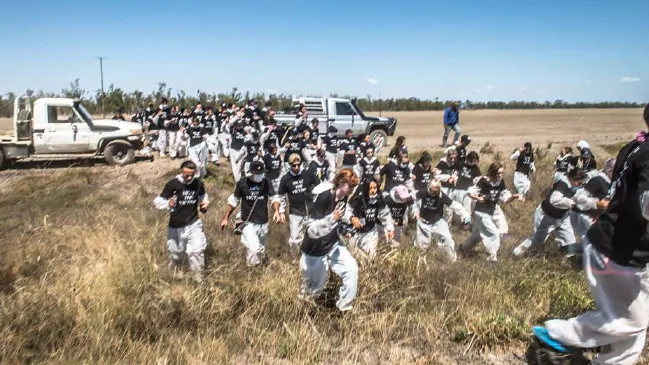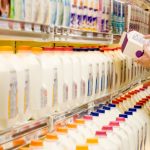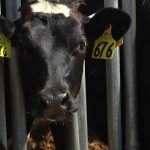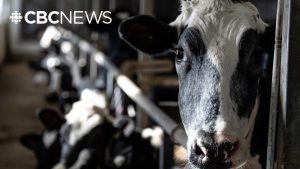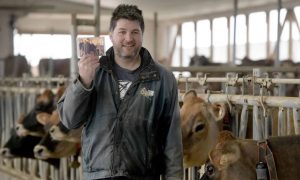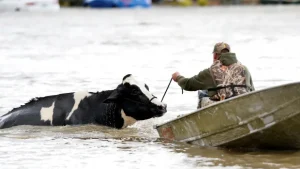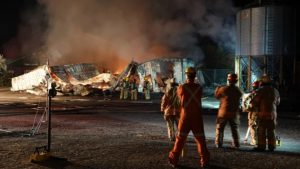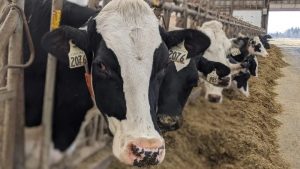
On a cold day in early March, animal activists trespassed onto a dairy farm in Southern Ontario. Making peace signs with their hands, wearing biohazard covers on their feet, their faces unmasked and visible, the dozen or so activists walked past farm staff and gave themselves a self-guided tour, live-streaming every moment online. The event left farm owner Lloyd Weber reportedly shaken up.
And rightfully so. The activists came without warning, ignored requests to leave and blatantly invaded his private property.
This form of activism – illegally entering and documenting often-unseen animal agricultural spaces – is not so new. In 2016, Toronto animal activist Jenny McQueen entered an Ontario pig production facility to document conditions, and subsequently removed two piglets. She will appear in court this week to face charges for break and enter, and mischief over $5,000.
These actions are apparently ramping up, with farms in the United States and Britain also recently being targeted, along with several farms and slaughterhouses across Australia this past weekend.
In Canada, where the treatment of animals on farms is not regulated by law nor overseen by government, this type of activism is likely to continue. Because when an industry is permitted to police itself, and to use labels and marketing that are sometimes misleading regarding animal welfare, how are the growing number of consumers who want to see how the sausage is made supposed to know the truth?
Transparency in animal farming has become a matter of mounting concern, as more Canadians become interested in the origins of their food, and the treatment of farmed animals. The topic recently came up in a debate on TVOntario’s The Agenda, featuring animal-rights lawyer Camille Labchuk and dairy farmer Bonnie den Haan. In the segment, Ms. den Haan insisted that “farm animals are not behind closed doors,” and that dairy farmers act with transparency. (Of note: Dairy Farmers of Canada recently withdrew an ad after Ad Standards, the advertising industry’s watchdog body, received numerous complaints that the ad was misleading.) She also stated that the public is welcome on farms only at prescheduled open-door events.
Activists with local group Liberation TO and international group Direct Action Everywhere subsequently visited Webstone Holsteins, in West Montrose, Ont. They showed up uninvited. What they found was not a welcoming farmer but a barn door quite literally closed in their faces. What couldn’t be concealed were rows upon rows of small white hutches peeking out from the snow, each containing a single small calf, including at least one found dead and frozen, and another that appeared to be dying, buried under hay.
Separating newborn calves from their mothers and isolating them in hutches is just one of the farming practices that this form of activism hopes to expose as standard, common and inhumane. Other such practices include so-called humane euthanasia guidelines put forth by the National Farm Animal Care Council (NFACC) itself: These practices, according to their guide, include, “grasping the hind legs of the piglet and striking the top of the cranium firmly and deliberately against a flat, hard surface,” typically a cement floor, also known as pig-thumping. Breaking the necks, or “manual cervical dislocation” of chickens by hand, and macerating newly born male chicks alive are also permitted and common practices.
Perhaps of greatest concern is that these troubling practices, and in fact all standards for the treatment of animals on farms, are not legally regulated or overseen by the government. Rather, it is the industry itself, via provincial marketing and lobby groups like Dairy Farmers of Ontario and Manitoba Pork (which claims on its website: “Serving the interests of Manitoba hog farmers”), and the NFACC, a private group dominated by agriculture-industry groups such as the Canadian Cattlemen’s Association and Egg Farmers of Canada, creating and overseeing their own voluntary codes of practice. As Ms. Labchuk described it on The Agenda, “It’s literally the fox guarding the hen house.”
Though provincial vets may inspect farms for issues concerning disease control and food safety, agricultural practices are typically exempt from provincial animal-welfare laws. The Canadian Food Inspection Agency only oversees the transport and slaughter of animals for food. And federal animal-cruelty laws are rarely applied in the farming context, with the Criminal Code providing vague and subjective descriptions of offences, such as when someone “wilfully permits to be caused unnecessary pain, suffering or injury, to an animal or bird,” (unnecessary typically being the loophole). As Ms. Labchuk adds, “I’m unaware of a single criminal charge against a Canadian farm for deliberate animal cruelty.” There are no comprehensive welfare standards at any level of government for animals confined on farms.
So no longer are animal activists only taking it to the streets to protest outside Canada Goose stores and your local steak house; they are now desperately and illegally taking it right to the farm, disrupting operations, worrying farmers and sharing it all in real time. And as long as the welfare of animals on Canadian farms continues to be overseen by the industry rather than law, farmers can likely expect activists to continue checking in on them, and showing the world what they find.
Animal agriculture has long operated in the comforts of secrecy. It appears that is now changing.
